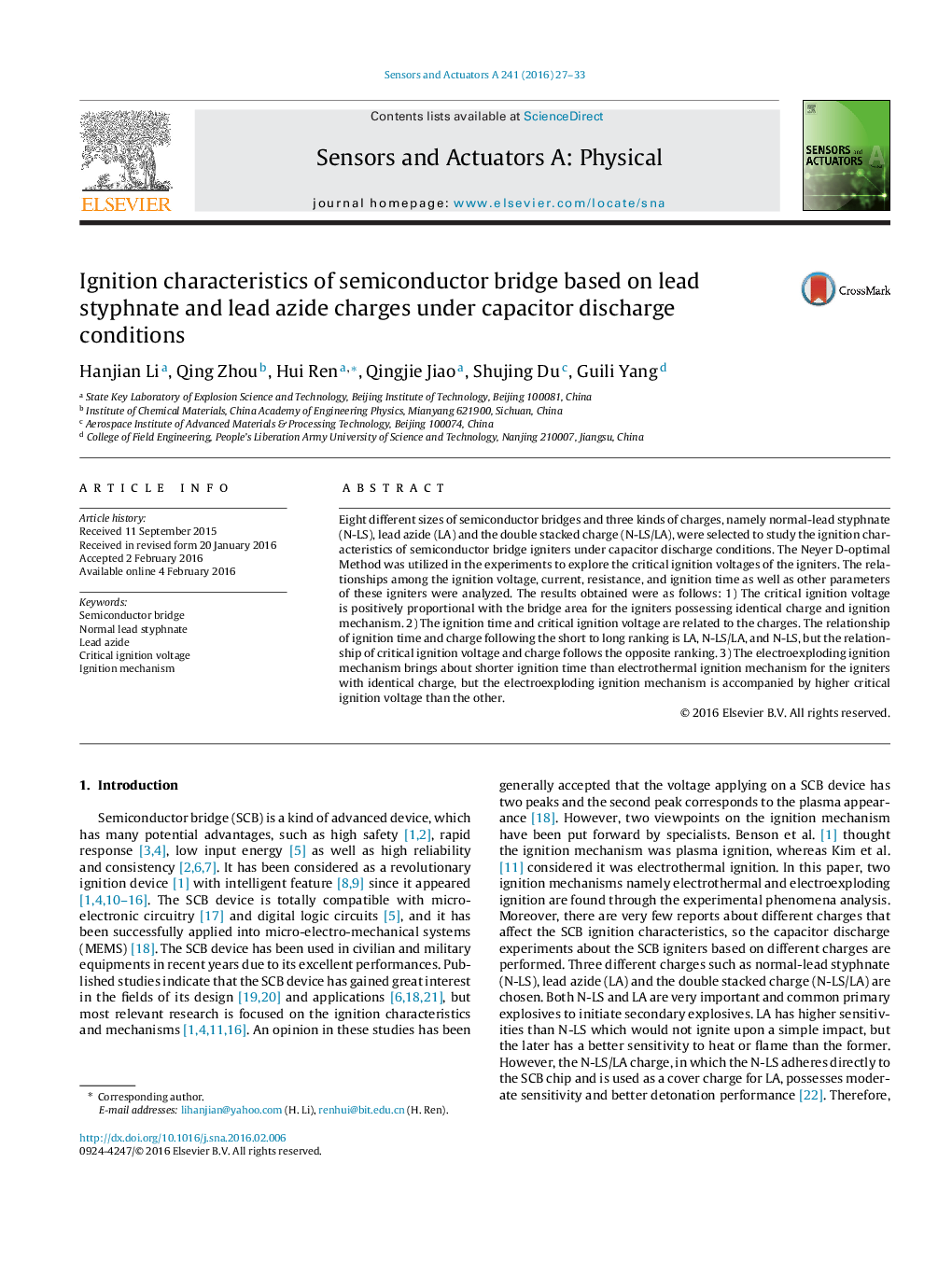| Article ID | Journal | Published Year | Pages | File Type |
|---|---|---|---|---|
| 736610 | Sensors and Actuators A: Physical | 2016 | 7 Pages |
•Twelve semiconductor bridge igniters were selected to study the ignition characteristics.•The critical ignition voltage is positively proportional with the bridge area.•The variation law of ignition time with charge type was presented.•The relationship between critical ignition voltage and charge type was concluded.•The ignition time of SCB/N-LS/LA igniter is very close to that of SCB/LA igniter when high discharge voltage is used.
Eight different sizes of semiconductor bridges and three kinds of charges, namely normal-lead styphnate (N-LS), lead azide (LA) and the double stacked charge (N-LS/LA), were selected to study the ignition characteristics of semiconductor bridge igniters under capacitor discharge conditions. The Neyer D-optimal Method was utilized in the experiments to explore the critical ignition voltages of the igniters. The relationships among the ignition voltage, current, resistance, and ignition time as well as other parameters of these igniters were analyzed. The results obtained were as follows: 1) The critical ignition voltage is positively proportional with the bridge area for the igniters possessing identical charge and ignition mechanism. 2) The ignition time and critical ignition voltage are related to the charges. The relationship of ignition time and charge following the short to long ranking is LA, N-LS/LA, and N-LS, but the relationship of critical ignition voltage and charge follows the opposite ranking. 3) The electroexploding ignition mechanism brings about shorter ignition time than electrothermal ignition mechanism for the igniters with identical charge, but the electroexploding ignition mechanism is accompanied by higher critical ignition voltage than the other.
